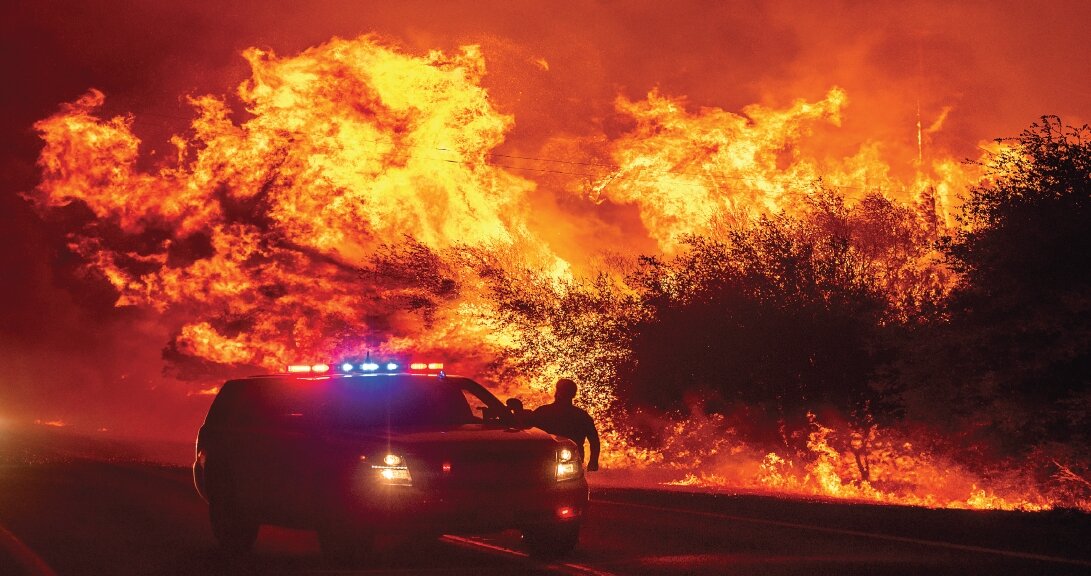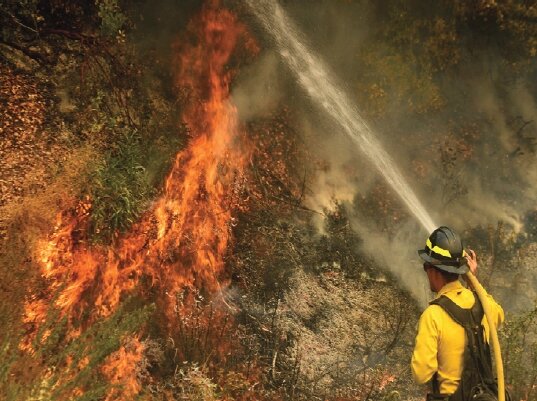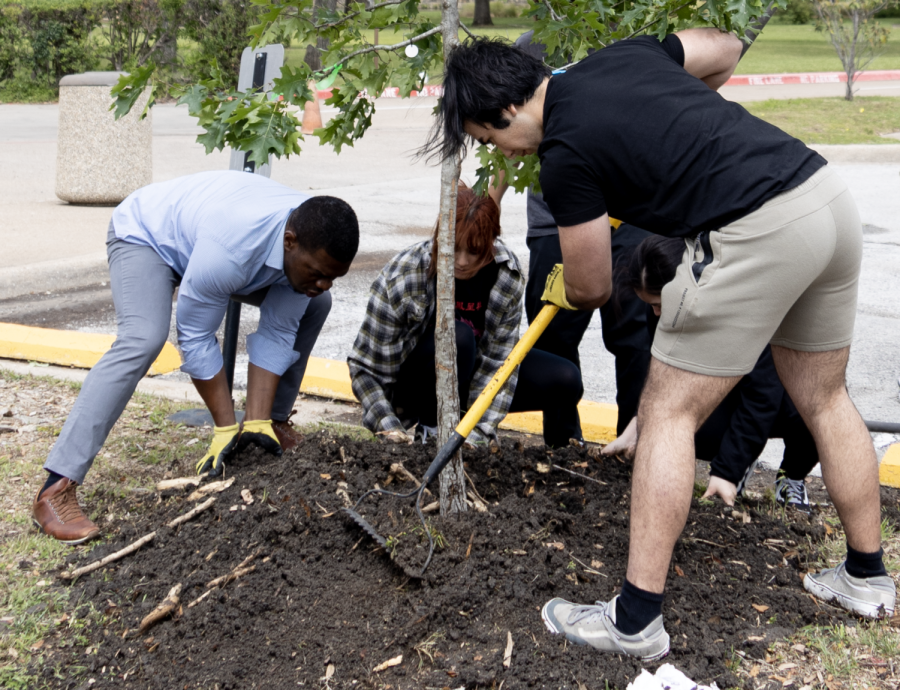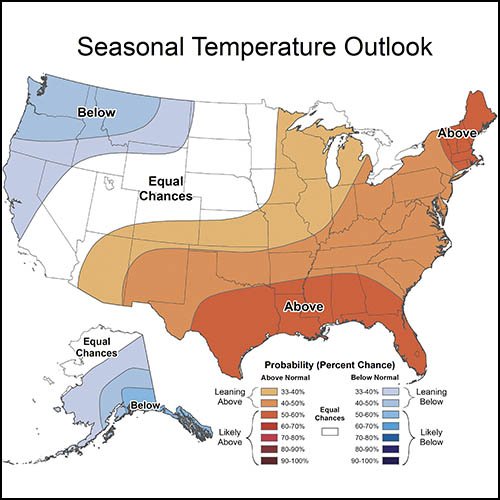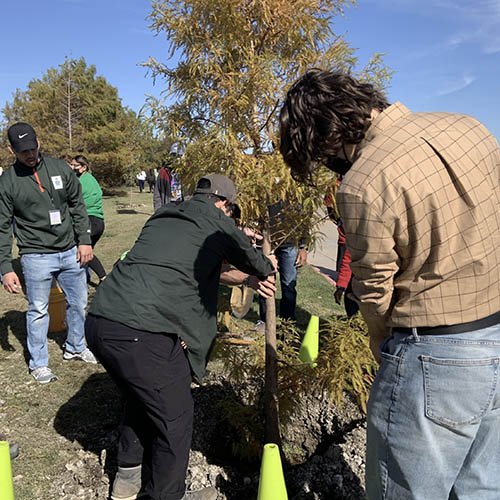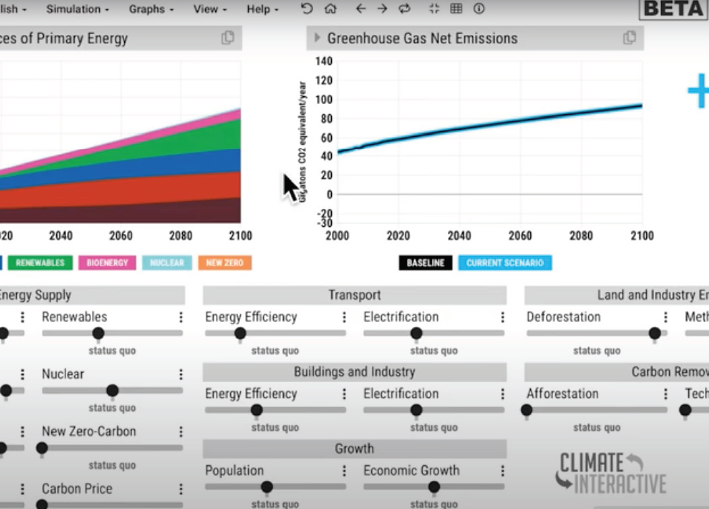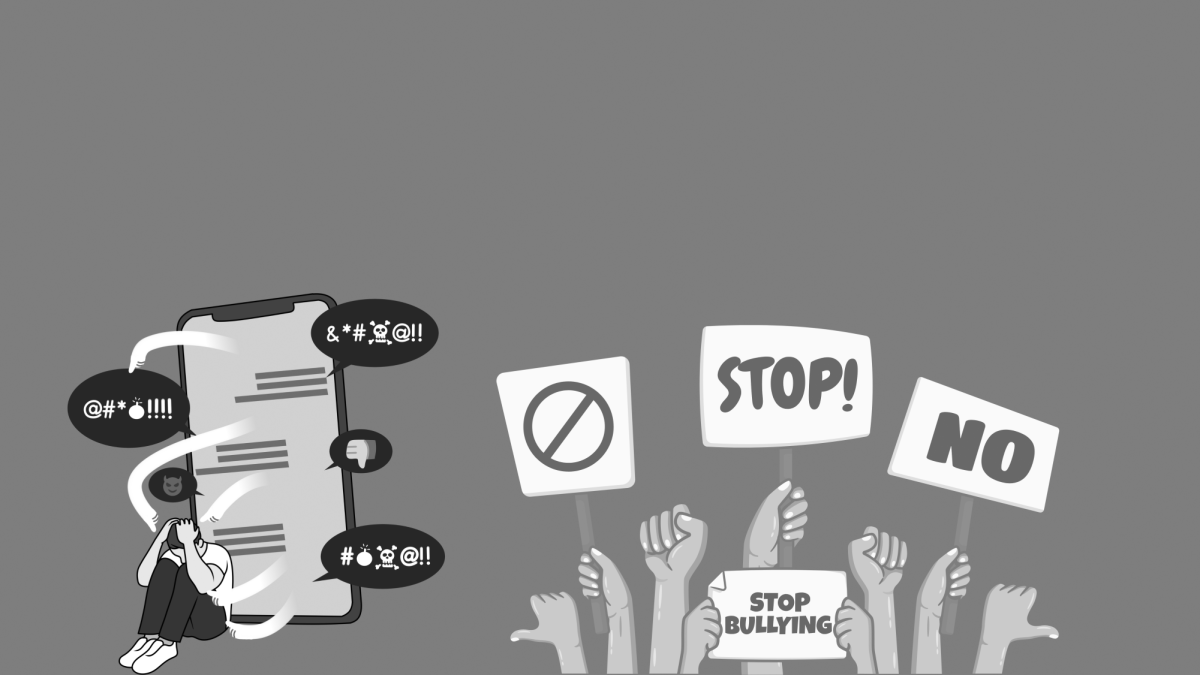Within two days of receiving California’s State of Texas Assistance Request, 13 firefighters from Dallas Fire-Rescue traveled west in hopes of containing some of the largest fires seen in the western U.S. Sept. 9, Dallas Fire-Rescue spokesman Jason Evans received the email and said firefighters had just one day, Sept. 10, to undergo tactical training for potential situations such as surviving 72-hour overnight missions which require food and water preservation, proper gear to camp out with amid haphazardous sleeping conditions, not to mention having to fight raging, indefatigable fires.
“They should expect at any given moment that they’ll need to be self-sustainable,” said Evans.
Flames above vehicles on Highway 162 as the Bear Fire burns in Oroville, California on Sept. 9.
Photos: Associated Press
According to Evans, firefighters have also been recruited from Arlington, Fort Worth, McKinney, Flower Mound and Allen. Evans says a team of firefighters from Lewisville had recently been relieved after their three-week stint in California and rotated out for a new group. Evans understands the sacrifices firefighters are required to make. There’s an understanding that it comes with the territory.
“These members have lives outside of firefighting. They willingly step away from it all — spending time with family, missing their kids’ games — to help those in need, in an entirely different state,” Evans said.
The length of deployment is yet to be determined with each stint lasting 14 days. The state of California will determine their needs and have the option of extending the status of current personnel for another 14-day period and/or requesting additional personnel if needed.
A firefighter puts out a hot spot in northern California. The El Dorado fire was caused by a gender reveal party.
Evans admits the fires in Dallas pale in comparison to the current California fires, with the Northern California fires already deemed the deadliest of the year.
“You’re talking about a drastic difference in the training process, conditioning and tactical training,” he said.
Evans assures the firefighters will be well-equipped while stationed in California. From there, they may be dispersed to different regions, such as Oregon and Washington, to assist fire-rescue squads.
Uncontrollable fires have become common in California with a record historic wind event this past year that caused tens of thousands of Southern California residents to evacuate. But this year’s fires in Northern California has been deemed the deadliest of the year with a death toll of 19 as of Sept. 11, at least four hospitalizations and over 3 million acres burned, according to The Associated Press. The Napa and Sonoma wine regions are also threatened by this week’s wildfires with L.N.U. Lightning Complex fire being the culprit, which will adversely affect this year’s harvest.
On Sept. 9, smoke from the wildfires doused the western skies of California, Washington and Oregon with hues of orange and red. Residents affected have made references to sci-fi movies, such as the “Blade Runner 2049,” to describe this apocalyptic-like scenery.
“It was really eerie to wake up at 6 a.m. to a dark, orange sky, but it was even stranger to see that this continued for the rest of the day. It felt like we were in a bizarre, nuclear winter,” said Andrew Ly, a former Dallas resident who currently lives in the Bay Area and the brother of this reporter.
Ly has been checking local news outlets and the City of Berkeley’s website for the latest updates on air quality and safety precautions.
“There is definitely smoke coming in from the wildfires and the air quality is pretty bad right now. I haven’t noticed a difference, but that’s because I’m healthy. I’m sure people who are sensitive to poor air quality are suffering right now,” he said.
According to Ly, people are continuing their daily lives as best as they can, especially in towns like Berkeley that are near the Bay Area, but not directly affected by San Francisco’s wildfires. He is still able to commute regularly on the Alameda county transit, but reports several restaurants are still closed due to COVID, and few allow outdoor seating. His school, University of California at Berkeley (UC Berkeley), is operating under COVID safety protocols.
Massive fires have also plagued Oregon and Washington this past week. The fires’ origins vary widely but all leave debris and ruins in their wake. Most officials have agreed that arid conditions and extreme winds are the main reasons for the wildfires engulfing the west. More than one million acres have been burned in Oregon and 980 square miles in Washington as of Sept. 13.
Washington Gov. Jay Inslee has publicly referred to these devastating fires in California and the Northwest as “climate fires” instead of wildfires with the Washington’s Department of Ecology citing climate change as the reason for increased wildfires, according to AP.
Oregon Gov. Kate Brown has declared a statewide fire emergency and reported 40,000 residents have evacuated. She has referred to the massive fires as “the greatest loss of life and property from wildfires in its history.”
Oregon’s Medford police have discredited rumors that political extremist groups are to blame for the cause of the wildfires and have taken to Facebook to debunk the claims.


